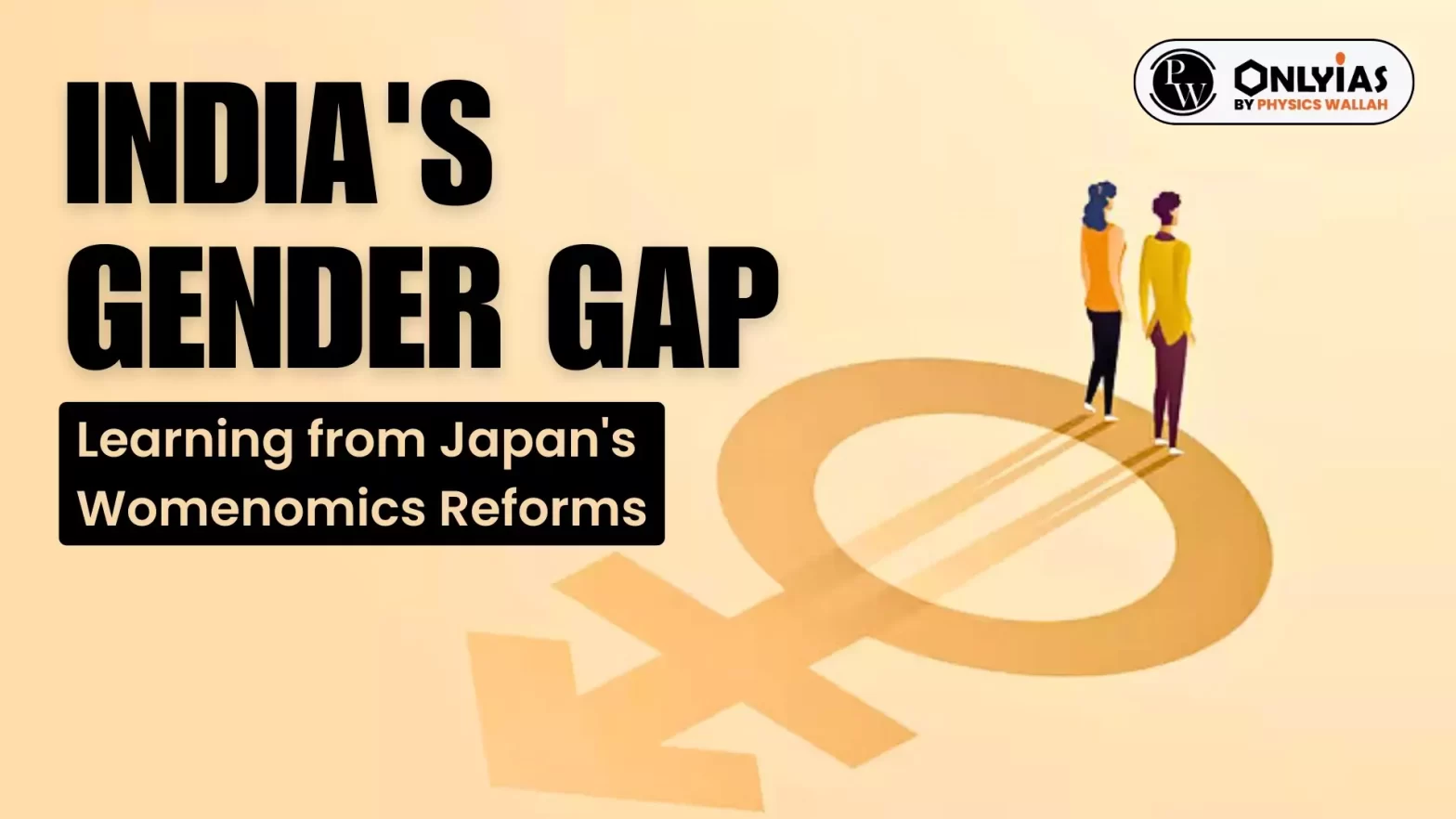Context
Japan’s “womenomics” reforms, boosted Women’s labor force participation rate from 64.9% in 2013 to 75.2% in 2023, addressing labor shortages.
What is Womenomics?
- Genesis: Womenomics was started by the Japanese Prime Minister Shinzo Abe. However, originally the term was introduced in a report published by the chief Japan strategist Kathy Matsui and her Team in 1999.
- About: It is a policy based on the idea that a country can boost its economy by getting more women into the workforce and their empowerment. They are rewarded with jobs and salaries that match their skills, talents, and ambitions.
Enroll now for UPSC Online Course
Womenomics Reforms/Rethinking Care Work and Responsibility
- Expansion of Daycare Capacity:The Japanese government’s investment to expand daycare capacity from 2.2 million in 2012 to 2.8 million in 2018 has reduced daycare waiting lists that would often run into years.
- In 2023, the government of Japan announced a further boost in investment of $26 billion for childcare measures between 2023 and 2026.
- Entitlement of Gender-neutral Parental leave: Japanese parents had been entitled to year-long partially paid parental leaves with women receiving 58 weeks, and men 52 weeks.
- Act on Promotion of Women’s Participation and Advancement in the Workplace, 2016: This made disclosures of diversity action plans and diversity data mandatory.
- It led to the introduction of the “Eruboshi” certification, a five-star system recognising companies committed to workforce diversity.
- Gender Gaps in Unpaid Care: Among the G20 countries, India and Japan have the widest gender gaps in unpaid care.
- Women perform about 8.4 times the amount of unpaid work in India valued at 15% to 17% of GDP in contrast to 5.5 times in Japan valued at about a fifth of GDP.
Learnings for India
- Bridging the gender gaps in domestic and care work: Japan saw its highest gains in WLFPR when it committed to long-term public investments in care infrastructure and services, especially childcare.
- Changing perception Around Social Norms: Legal entitlement to gender-neutral parental leave is not sufficient. Enhancing uptake among men requires an employer-led approach that dispels gender stereotypes around care work.
- Investment in care infrastructure and services solutions: Solutions covering childcare, elder care, domestic work, and long-term care for highly dependent adults to reduce dependency and access the silver economy.
- As the share of elderly persons in India’s population is expected to rise from 10 per cent currently to 20 per cent by 2050, India will need to prioritise elder care infrastructure and service investments.
Why is Womenomics Important?
- Traditionally Divided Roles: Usually, the traditional role for men is to earn while the woman takes care of the home and the family.
- In societies that follow this system- men bear the complete burden of earning money for the whole family.
- No Recognition of Women’s Role: Women are capable of contributing in society but due to the restriction and usual social norms their education, skill, and economic contribution never get the reward and compensation.
Addressing the Gender Gap: Challenges for Working Women in India
- Cultural Hurdles: The country has cultural hurdles where roles assigned to women are keeping them away from contributing to society.
- Relationship of Labour Force Participation Rate (LFPR) with Women and Education: The LFPR pattern shows U shaped relationship with women. As women get more education, the LFPR initially falls i.e., they are restricted at home.
- Lack of Social Benefits: Many women work in low-productive jobs often without social benefits. Women don’t join jobs because of a lack of suitable jobs and lack of marketable skills.
Five-Pillar Strategy to Unlock Business Opportunities in India’s Care Economy
- Gender neutral and paternity leave policies
- Subsidies for availing/providing care services
- Enhancing investments from both the public and private sector in care infrastructure and services
- Skill training for care workers
- Quality assurance for care services and infrastructure.
Enroll now for UPSC Online Classes
Conclusion
India’s WFLPR has begun showing a rising trend, increasing from 23 per cent in 2017-18 to 37 per cent in 2022-23. To keep this momentum going, a continued long-term focus on the care economy is needed for unleashing #NariShakti to achieve a Viksit Bharat @2047.
Also Read: India Employment Report 2024: Key Highlights
| Prelims PYQ (2016):
With reference to ‘Stand Up India Scheme’, which of the following statements is/are correct?
1. Its purpose is to promote entrepreneurship among SC/ST and women entrepreneurs.
2. It provides for refinance through SIDBI.
Select the correct answer using the code given below.
(a) 1 only
(b) 2 only
(c) Both 1 and 2
(d) Neither 1 nor 2
Ans: (c) |
![]() 12 Apr 2024
12 Apr 2024

